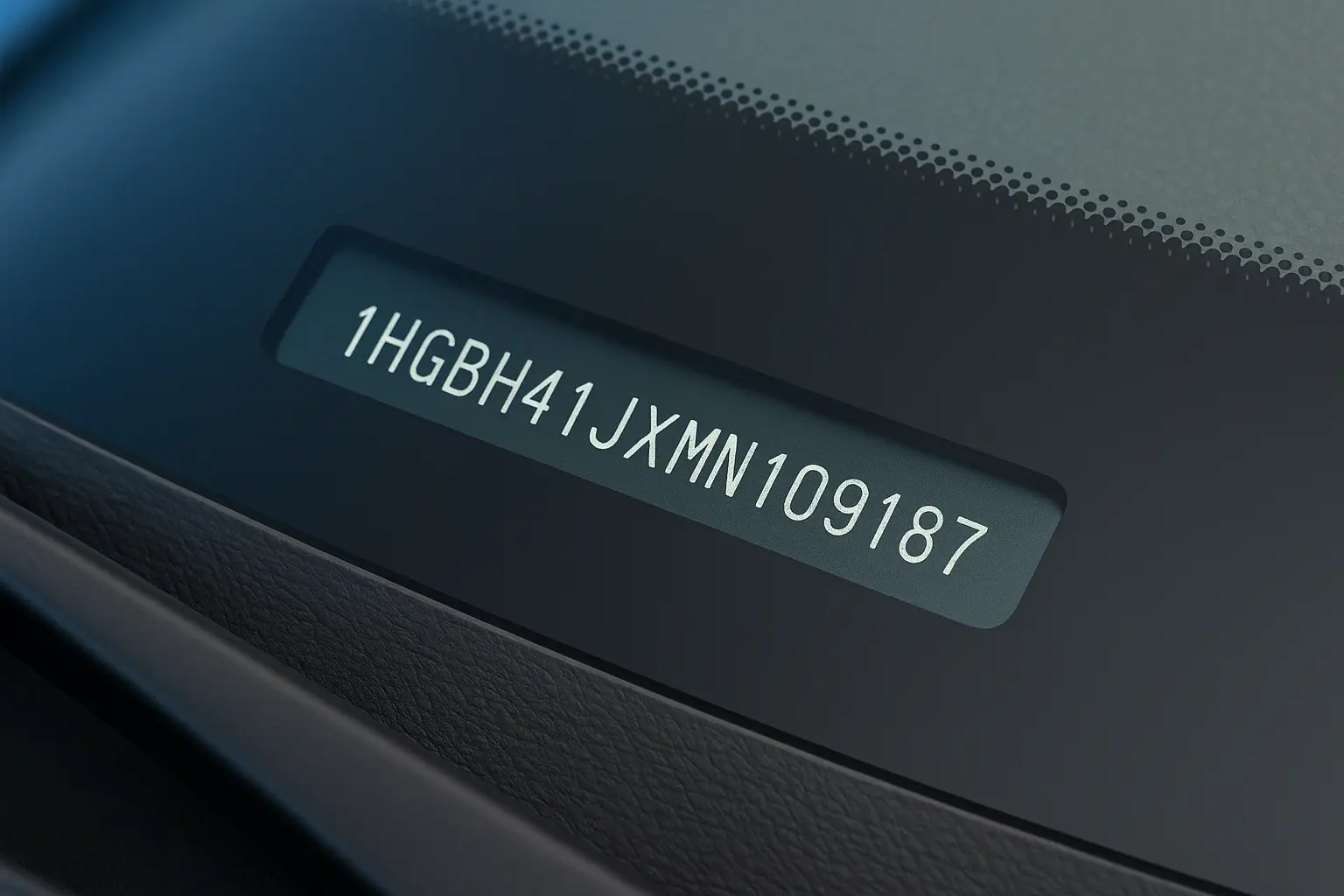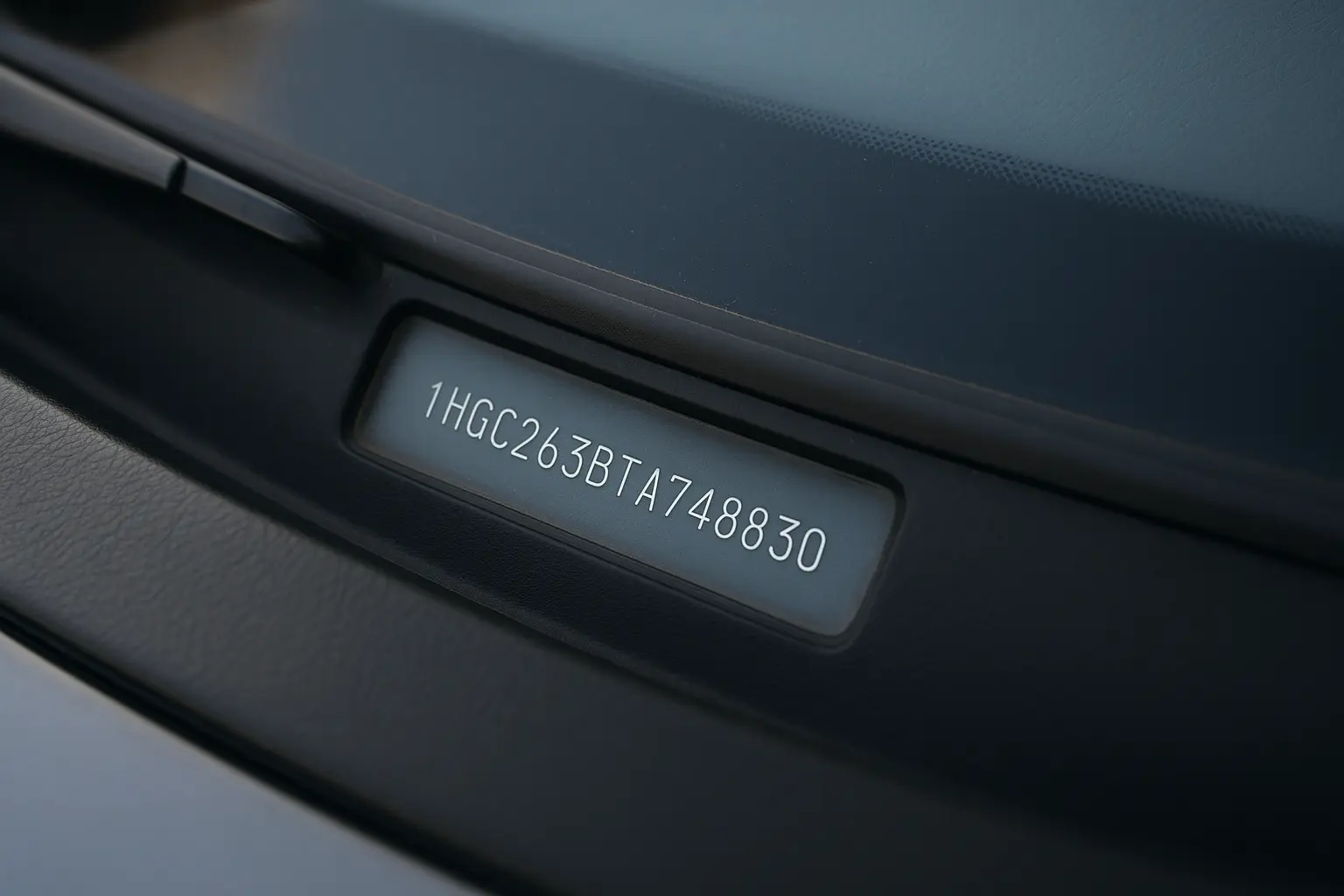What’s a VIN and Why It Matters for Car Buyers in Australia
When shopping for a car—whether brand new or used—one tiny detail can reveal a mountain of information: the Vehicle Identification Number (VIN). Think of it like your car's DNA, uniquely assigned at birth and packed with essential data. But what exactly is a VIN? Why is it so important for Australian car buyers, and how do you use it to avoid buying a lemon?
In this comprehensive blog, we’ll walk you through everything you need to know about VINs—from decoding to checking histories—so you can buy smart and stay protected.

1. What Is a VIN?
The Vehicle Identification Number (VIN) is a unique 17-character alphanumeric code that identifies a specific vehicle. No two cars in the world share the same VIN, making it the single most important identifier for any vehicle.
Why 17 Characters?
The modern 17-character VIN system was standardised globally in 1981. Before that, VINs varied in length and format. Since the change, every manufacturer uses this structure to help standardise information retrieval, regardless of make or model.
2. Where Can You Find the VIN?
In Australia, you can locate the VIN in several places:
On the vehicle’s compliance plate (under the bonnet or near the firewall)
On the dashboard, visible through the windshield on the driver’s side
Inside the driver-side door jamb
On registration papers
On your insurance documents
Pro tip: Always cross-check the VIN in multiple locations to ensure no tampering has occurred.
3. Why Is the VIN Important?
Here’s why knowing and checking a VIN should be non-negotiable for car buyers:
✅ Verifies Vehicle Identity
Make sure the car matches the seller’s description. It helps detect VIN cloning or fraud.
✅ Enables a PPSR Check
The Personal Property Securities Register (PPSR) uses VINs to tell you if the car is under finance, written-off, or stolen.
✅ Reveals Vehicle History
You can check past ownership, registration changes, accident history, odometer tampering, and more.
✅ Supports Resale and Insurance
Correct VIN details are vital for resale and required for insurance policies.
4. What Does Each VIN Character Represent?
Here’s how to decode those mysterious 17 characters:
| VIN Position | What It Represents |
|---|---|
| 1–3 | World Manufacturer Identifier (WMI) – e.g., JTD = Toyota Japan |
| 4–9 | Vehicle Descriptor Section (VDS) – model, engine, body style |
| 10 | Model Year – e.g., Y = 2000, A = 2010, M = 2021 |
| 11 | Manufacturing Plant Code |
| 12–17 | Sequential Production Number – unique serial number |
Example VIN: JTDKN3DU0A1234567
This might reveal: Toyota Prius, 2010 model, built in Japan.
5. How to Do a VIN Check in Australia
Before buying a used car, always conduct a VIN check. You can do this through:
1. PPSR (Personal Property Securities Register)
Cost: Around $2
What it reveals:
Encumbrances (finance owing)
Written-off status
Stolen vehicle status
Registration details
VIN verification
Visit: ppsr.gov.au (but don’t link this on your blog)
2. Third-Party VIN Check Services
Sites like CarHistory, REVS Check, and others offer enhanced reports that include:
Past odometer readings
Vehicle valuation estimates
Maintenance history (in some cases)
6. Common VIN-Related Scams in Australia
Unfortunately, unscrupulous sellers may attempt VIN fraud. Here are the most common traps:
🚨 VIN Cloning
A stolen car is rebadged with a legitimate VIN from a similar model. Double-check VINs in multiple locations.
🚨 Fake PPSR Certificates
Scammers generate fake clearance certificates. Always use official channels to verify VIN and download your own PPSR PDF.
🚨 Odometer Rollbacks
Some VIN history services include odometer records. Use this to confirm mileage claims.
7. Buying a Used Car? Make VIN Checks Your First Move
Buying second-hand? The VIN is your protection against buying a car with:
Hidden accident damage
Outstanding finance
Stolen status
Incorrect odometer readings
Fake service history
Checklist for Used Car Buyers Using VIN:
✅ Does the VIN on the compliance plate match the rego papers?
✅ Have you done a PPSR report using that VIN?
✅ Have you compared VIN location stamps (dashboard, door, engine bay)?
✅ Did you verify odometer history with a trusted VIN check provider?
8. Are VIN Checks Useful for New Cars Too?
Yes! Even new cars benefit from a VIN lookup. Here’s why:
Confirm build date vs. compliance date
Match factory features and trim levels
Avoid demo vehicles being sold as "new"
Secure insurance with the correct VIN
9. What’s the Difference Between a VIN and a Chassis Number?
Though often used interchangeably, there's a slight distinction:
| Term | Meaning |
|---|---|
| VIN | Globally standardised 17-character ID used post-1981 |
| Chassis No. | Typically older format, used before VIN standards, fewer than 17 chars |
In most modern cars in Australia, VIN = Chassis Number.
10. Manufacturer VIN Patterns in Australia
Each automaker follows VIN rules but embeds their own logic into the VDS section.
Examples:
Toyota VINs start with J (for Japan) and often have model codes in 4–9 positions.
Hyundai VINs begin with KMH, made in Korea.
Mazda VINs starting with JM0 indicate Australian-compliant builds.
Some imported American or European cars will start with:
1HG = Honda USA
WVW = Volkswagen Germany
VF1 = Renault France
11. Should You Be Concerned If a VIN Is Missing or Damaged?
Yes—absolutely.
Missing or altered VINs are red flags. Possible explanations:
Accident damage repairs where compliance plate wasn’t reinstalled
VIN tampering or fraud
Stolen vehicle with scrubbed identity
You must walk away or report the car if a proper VIN is not clearly displayed.
12. Can You Use a VIN to Track Recalls?
Yes. Most manufacturers allow VIN-based recall lookup on their websites.
In Australia, you can also use:
IsMyAirbagSafe.com.au – For Takata airbag recalls
Manufacturer-specific recall check portals
www.infrastructure.gov.au for broader recall info
13. How Dealers Use VINs in Australia
Dealerships rely on VINs for:
Accurate stock control and invoicing
Matching parts and servicing requirements
Calculating build date vs. delivery date (important for depreciation)
When negotiating a car purchase, especially for demos or discounted stock, ask for the VIN to confirm how long it’s been sitting in stock.
14. How VIN Affects Car Insurance in Australia
Your car insurance policy is tied directly to the VIN. If it’s wrong:
Claims can be denied
Theft recovery may fail
Policy may be void
Always double-check your insurer has the correct VIN.
15. Final Thoughts – Don’t Buy Blind, Always Check the VIN
In an age of digital fraud, high vehicle costs, and increasing complexity in the used car market, the VIN remains your most powerful weapon. It unlocks vital vehicle data, protects your purchase, and gives you bargaining power.
Whether you’re buying your first car, a budget hatchback, or a second-hand 4x4, a two-minute VIN check could save you thousands of dollars.
Summary: What Every Aussie Buyer Should Do with a VIN
Locate and verify the VIN in multiple places
Do a PPSR check before any money changes hands
Use the VIN to match service history and ownership
Ensure VIN accuracy on rego and insurance docs
Don’t buy a car if the VIN looks tampered, hidden, or mismatched
If you’re serious about buying right in 2025, don’t skip the VIN. It’s not just a number—it’s your key to driving away with confidence.
Leave a comment
Your email address will not be published. Required fields are marked *




















